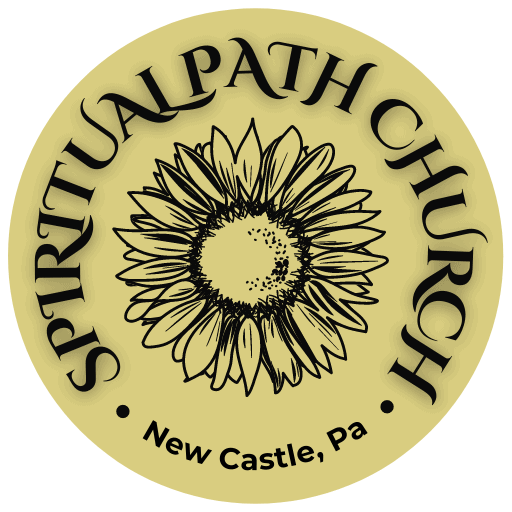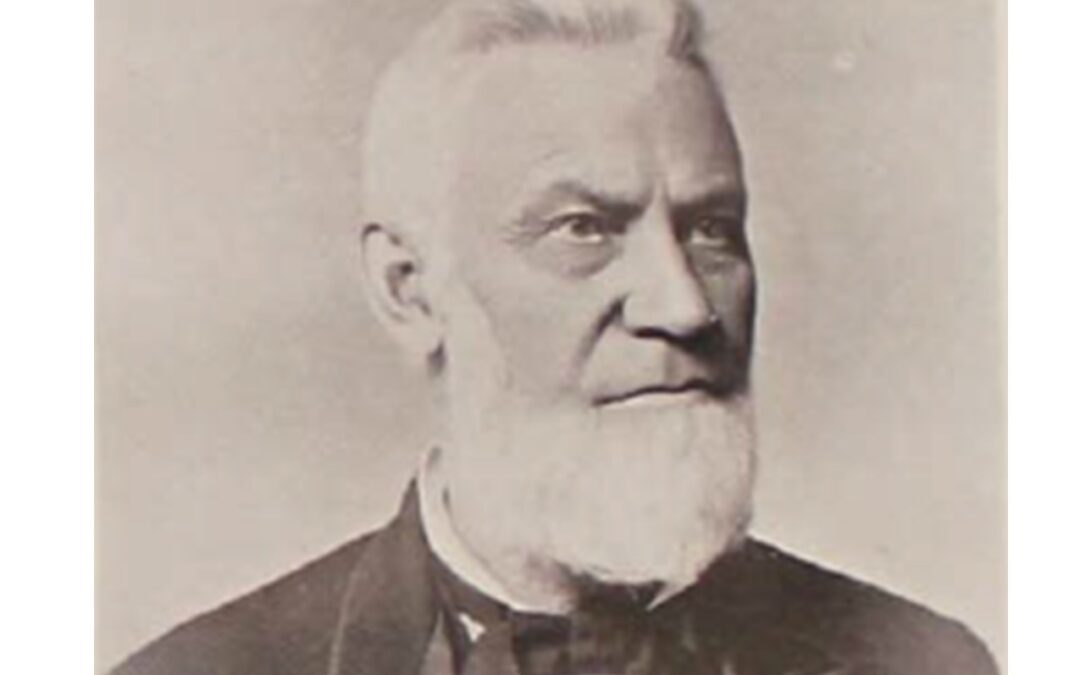
by iconicweb | May 15, 2023 | Karen's Korner
Joseph W. Dennis was born in 1827 in Green County, New York to Joseph and Julia Ann Dennis. He married Delia Toles, and they had two children before she died. He married his second wife, Lucy Mayfield, in the late 1850s and they had a son in 1860. Joseph lived in Buffalo most of his life working as a dock builder and contractor. In his obituary, it said he built most of the docks and coal trestles in the city of Buffalo. He was prominent in Republican politics and was an alderman during 1873-1874 for the third ward.
It is unclear when Joseph became involved in Spiritualism. He posted an advertisement in The Watchman in 1887. It said, “Send to J. W. Dennis for a sheet of his Magnetized Paper which is a magnet that will bring to the wearer, a Spirit Guide for Development or Healing. Ten cents per sheet. Can give references from mediums.”
The Buffalo News, 14 March, 1895, published one of Joseph’s poems submitted by another person. “J.W. Dennis, who wrote the verses quoted, is a Buffalo man, well known in Lily Dale, and every spiritualist in Buffalo will laugh over this satire on Mr. Dennis. His request to not mourn for him appeared in the Progressive Thinker, March 6, 1895
When I am Born Again
No black for me
No robes of night,
No clouded brow,
But robes of light;
No pall on coffin lid,
No priestly quack
No tears of grief,
No hireling hack,
No woes, no wails,
No sorrow’s veins.
But shouts of joy
And songs of mirth
Proclaim the news,
“Another birth.”
Joseph was a member of the Buffalo Spiritual Church Society and gave many lectures at their meetings in the late 1890s. In a 1900 announcement, he was referred to as reverend. He gave the lectures alongside medium Mrs. C Lewis Chase, who gave readings. In 1903, Joseph attended Lily Dale with prominent Spiritualists, Carrie E. S. Twing, W. M. Lockwood, and W. J. Hull. Joseph was a regular contributor to the Harmonia published in 1885-1886 a published a piece called “My Vision” in the January 1886, vol. 1 no. 7 issue.
Joseph’s wife, Lucy, died in 1911. He followed the next year at the age of 85. City hall flags flew at half-mast the day of his funeral in his honor.
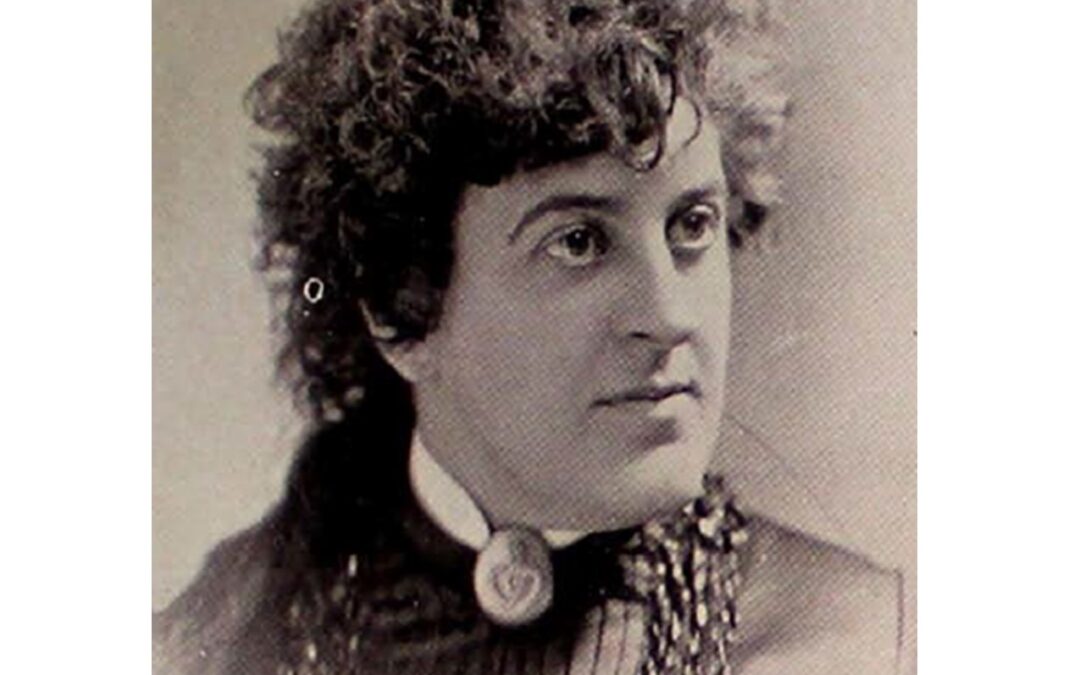
by iconicweb | May 9, 2023 | Karen's Korner
Maud E. Barrock was born in 1852 in Marion County, West Virginia, the fourth child of Sarah J. and Phillip S. Barrock. Her father was a Baptist and mother a Methodist. They said she was born with a double veil over her face. When she was only a toddler, luminous lights were sometimes seen about her, and sparks flew from her hair. She liked to spend time in the dark and often her mother couldn’t find her. Her cradle rocked by itself. By the age of five, she had unseen playmates and said she could hear the trees and plants singing. Of course, her parents didn’t take kindly to all these happenings and thought the devil was behind everything.
A kettle of boiling lye accidentally spilled on Maud, and she was treated by a doctor. But when he returned to the house, she asked for pencil and paper and wrote, “Get pine needles, crush and mix with linseed oil, put between beet leaves and apply immediately.” The doctor recognized an old friend’s handwriting and did as she instructed. Maud recovered.
Her parents refused to educate her, believing her abilities were the work of the devil. She tried to sneak off to school but was caught. In a moment of temporary blindness, a spirit came to her and instructed her how she would learn from the spirit world in a grove of trees near the creek. And that she did.
When the civil war began, the family moved to Iowa. Maud spoke in French and German by then, advised neighbors on happenings duirng the war, and found missing things. She also communicated with spirits via rapping sounds. Unhappy, Maud ran away at one point, returned home and went through an exorcism at the church, and ran away again. She even thought of suicide before finding Mr. John J. Hall from New York City, who told her she was a medium. Her spirit guide came to her then. His name was Clarence.
In 1868, Maud married Albert Lord in Wisconsin. They had one daughter who was known as Adrienne de Corische. After Albert died, Maud married J. S. Drake in 1887. He was a contractor and hydraulic engineer and was involved with politics and a newspaper writer. “Mr. Drake apparently has the ability, education, experience, courage and inclination so necessary to assist in this important work,” according to The Religio-Philosophical Journal, 1887.
In 1900 they were lodging in St. Louis. Drake was listed as a lawyer and she a lecturer. He was ten years her senior. They eventually moved to Boulder Creek, California where they lived 27 years. After Drake died in about 1914, an Ernst Lydick, who was living in Pittsburgh, received many spiritual messages from Maud’s control, Clarence, and her deceased husband to travel to California and take care of her.
Maud and Ernst were eventually married. Maud died in 1924 in Santa Cruz after she initially survived burns when her house burned at Boulder Creek. “For many years a spiritualist of considerable prominence, the events of the wedded life of the deceased woman, as told this morning by her third husband, Ernst B. Lydick, also a spiritualist and author of various literary works of psychic phenomena form an unusual and sometimes weird story.”
Maud’s biography was published as Psychic Light: The Continuity of Law and Life in 1904 by Frank T. Riley Publishing Co. Kansas City, Missouri and contains much more information about her.

by iconicweb | May 2, 2023 | Blog, Karen's Korner
John W. Day was born in Gloucester, Massachusetts in 1838, son of Joseph and Augusta Day. His maternal grandfather was Rev. Ezra Leonard who converted to Universalism. John was educated in grammar schools and went to high school in Portsmouth at the Hampton Academy. He joined the office of The Trumpet, a Universalist publication and then the Banner of Light soon after its inception in 1857 as an apprentice to “the art preservative.”
He thought of joining the Universalist ministry but his poor eyesight, which made him abandon printing as well, lead to several outdoor jobs. He spent 2 years at sea and 5 years in the army ending up a captain in the cavalry from 1861-1866. When he returned to Boston in 1867, he worked for The Banner as compositor, shorthand reporter, and Associate Editor. In 1880 he married Nellie M. King, twenty years his junior, of Cambridge, Massachusetts. He was a member of the Masons, Odd Fellows, and the Grand Army of the Republic.
In 1880 he was living with the King family and working as reporter at age 42; Nellie was 23 and they had no children. John authored many poems and recited them at Spiritualist meetings in the Boston area. Twenty of the poems were published as A Galaxy of Progressive Poems in Boston in 1890. His “The Wine of the Spirit” begins:
Another year hath trod th’ arena’s floor
Where uses stern to Being’s call respond;
And we with gladness hail the loved once more
Who bring their message from the Fair Beyond!
We mark with joy Progression’s prophet shine
That streams puissant from that primal ray
When angel fingers from the land divine
Swept the dark lignite clouds of doubt away.
According to the Biography of Mrs. J.H. Conant, the World’s Medium of the Nineteenth Century published in 1873, “Mr. John W. Day, a reporter at the Banner of Light office, listened on many occasions to utterances through Mrs. Conant while she was under control by Parker (spirit Theodore Parker), and minuted in shorthand what that spirit desired to put forth as a biography of his medium.”
Unfortunately, John died from a gunshot wound in Somerville, Massachusetts in 1898 after he retired from working at the Banner. His work as editor and reported greatly influenced the dissemination of information about Spiritualism across the country.
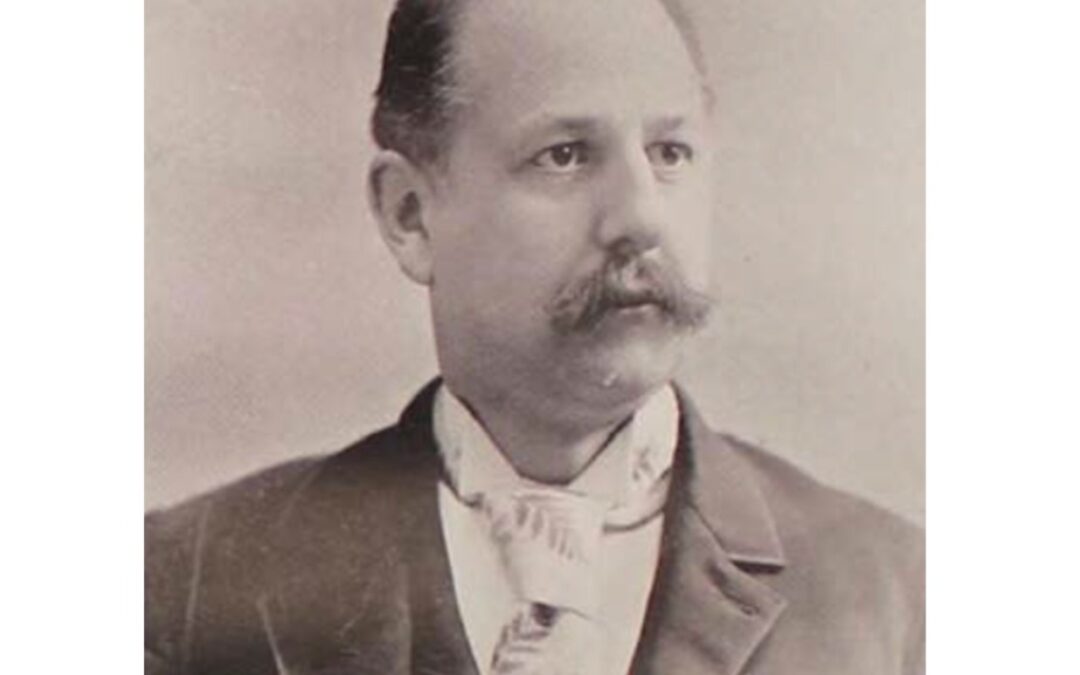
by iconicweb | May 1, 2023 | Blog, Karen's Korner
Lucius Colburn was born in Plymouth, Vermont in 1854 to Moses and Eunice Colburn. He had a younger brother, who died in 1879 while they lived near Rutland. Lucius never married and devoted himself to lecturing and working as a medium the rest of his life.
During the 1880s and 1890s, Lucius traveled throughout Vermont while living in Manchester. He gave lecturers, inspirational speeches, sermons, improvised poetry, and readings in Orleans County, Essex Junction, St. Albans, East Wallingford, South Barre, Tyson, and Reading.
Lucius was a member of the Vermont Spiritualist Association and participated in a majority of their meetings as lecturer and medium. At the 1890 spiritual convention in Tyson, he gave the opening address, had a séance in a closed session, gave a lecture, improvised a poem and sang music to close the day’s meeting. He also attended Spiritualist Camps, like Lake Sunapee in 1885 where he was known for his “satisfactory tests as a medium.”
The Spiritualists of Lawrence County, New York held a convention at West Potsdam in 1892 where Lucius was the leading speaker. The following year, the Progressive Thinker, vol. 7 no. 184, 3 June 1893 wrote that “Bro. Lucius Colburn is kept very busy going from one part of the state (Vermont) to another, holding meetings and test circles. In his circles he had convinced many a doubting Thomas of spirit return.” By the late 1890s, Lucius was referred to as reverend and conducted sermons in Orleans County on Sundays.
In the 1900 census, Lucius R. Colburn referred to himself as a clergyman. At the 1903 Vermont state convention, Lucius gave a talk entitled, “Is Life worth Living?” It was sometime after that that he moved to California. Reporting on the Summerland Camp Meeting in the Progressive Thinker, vol. 5 no. 210, 10 October 1914, John T. Lillie wrote, “Lucius Colburn eloquent, earnest and honest, not only in his rostrum work helped the camp, but by labor in the entertainments and by contributions did much to make the meeting a financial success.”
Around 1910, Lucius started the Vermont Society in Santa Barbara, California and was president. At the same time, he attended the state Spiritualists association in L.A. and gave Impromptu poems. He was a 1912 San Diego convention speaker. In 1913 he was listed as Mr. Lucius Colburn, pastor of the Progressive Church in Pasadena.
In the Press-Telegram, 10 Nov 1913, they wrote of Lucius, “Speaking on the ‘the ideal life’ at the First Spiritualist church, Universal temple, 415 Linden avenue, Lucius Colburn, of Pasadena said: “We are living today in a most remarkable age. The religions of the past have been of the material nature instead of the spiritual. Our ideals are the real life. Whoever lives to manifest in this life manifests his ideal—it is not the life beyond, but the life onward. The inmost thought of the soul has yet to be expressed and we must begin with child life to develop it. Colburn said while we are chiseling or developing or characters let us strive to make for the very highest ideals we can conceive, Let us do it now, and not wait for some time to come. Let us with our own deeds, actions and principles work out all life’s problems and success and an ideal life will be ours.”
In the 1910s, Lucius owned a boarding house, was a member of the Green Mountain Club, and attended Mineral Park Spiritualist camp. He continued with his Spiritualist lectures in California but died a tragic death in 1925. As a boarding house owner he was known to have plenty of money on him all the time. Thieves broke into his room and tied and gagged him. He did not survive the attack.
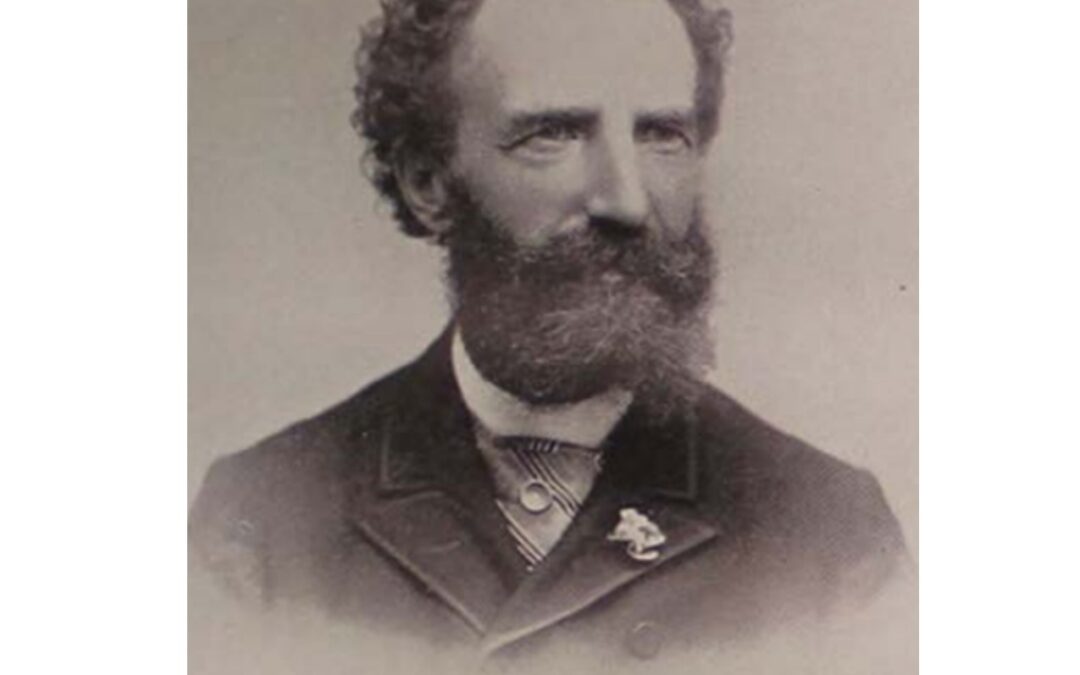
by iconicweb | Apr 24, 2023 | Karen's Korner
Dean Clark was born in Royalton, Vermont in 1837 to Jedediah and Mary Clark. He helped his father on their farm and was still working there in 1860 at the age of 23. Dean married Harriet Horton Bardy in 1863 in Sudbury, Vermont where he worked as a physician. It is unclear what happened to Harriet. By 1870, Dean was traveling the country as a Spiritualist lecturer.
Dean lived in several communities, from Chicago, Illinois to Oakland and San Francisco, California, to Portland, Oregon from 1872 to 1886. He returned to the Boston area in 1887, but still travelled widely. He was speaker at the Liberal Spiritualist Society in Oakland at their 44th anniversary celebration in 1892. In 1900 he was a representative of the American National Spiritualist Association at the Paris Congress and visited London while abroad.
A Guide to Mediumship and Psychical Unfoldment by E. W. and M. H. Wallis contained several quotes from Dean dealing with mediumship, magnetism, and physical phenomena. One from the Banner of Light stated: “The word mediumship, as understood and used by Spiritualists, technically speaking, means a susceptibility to the influence, and more or less control, of decarnated spirits. Physiologically, it means a peculiar nervous susceptibility to what may be termed the ‘psychic force,’ which spirits use to move the mind or body, or both, of their moral instrument.” He added that, “Novices in mediumship have no business to assume obligations they are not fully qualified to fulfill.”
In the Progressive Thinker, vol. 2 no. 36, 2 August 1890, he wrote “Our work is that of pioneers. Let us do it faithfully and well, carrying our standard in the vein, bearing the motto: ‘Spiritualism Pure and Simple, Unalloyed by Theosophic Speculations.’”
Dean was living with his brother and family in Brookline, Massachusetts in 1910. He died two years later, in September of 1912 and was buried near his hometown in Vermont.
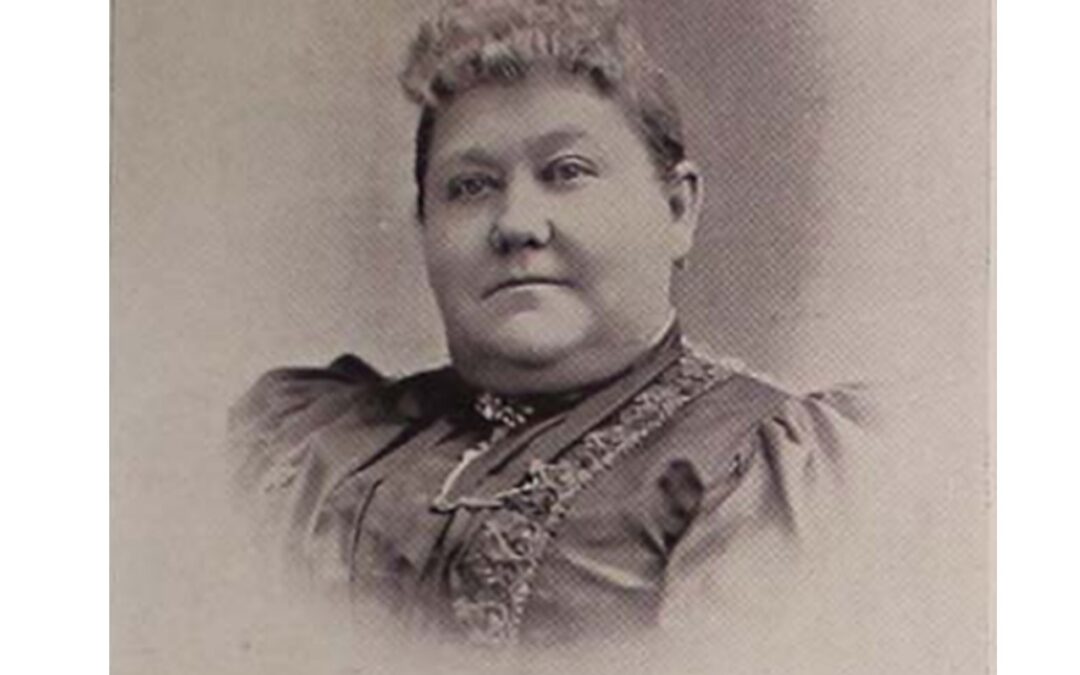
by iconicweb | Apr 11, 2023 | Karen's Korner
Olive A Blodgett was born in New Hampshire about 1840. She married Joseph C. Blodgett and by 1860 they were living in Columbia, Wisconsin where Joseph worked as a farmer. They would later move to Davenport. Olive was listed as a slate-writing medium presenting communications from H. M. Hoxie at one of The Mississippi Valley Spiritualist Association seances in April 1887. Joseph was a traveling salesman at the time. Olive was later listed as a physician in the Davenport 1890 directory.
Both Joseph and Olive were involved with Spiritualism. In 1871, they held a birthday dinner in honor of Will C. Hodges. The Progressive Thinker vol. 3 no. 67, 7 March 1871 wrote, “Spirit ‘Pansy’ took control of her medium, Mrs. Ollie A. Blodgett, and recited a beautiful poem entitled ‘The Message of the Flowers.’”
At a meeting in Dubuque, the Sioux City Journal, 5 April 1892, reported “…platform tests by Mrs. Blodgett, a trance medium, of Davenport, through whose entranced brain ‘Bright Eyes,’ an Indian girl spoke, asking and receiving from the audience recognition of many who had ‘passed out’ to the spirit land.”
In a Letter to Editor of The Progressive Thinker vol. 6 no. 157, 26 Nov 1892, Olive wrote, “Your paper is most excellent and a general favorite. About the holidays I intend to do some missionary work in sending out a few yearly subscriptions of The Progressive Thinker, for I count each day lost in which I have done no good or made nobody happy. We have got to be unselfish, charitable and kind; and our work must be practicable and our relations to the human family must be to do good everywhere we see it should be done; for, as you say, we cannot receive the highest spiritual teachings and do nothing.”
Olive was involved with the Ladies Independent Union which helped care for Mt. Pleasant Park, the local Spiritualist camp. She was also Vice President and of the board of directors of the Mississippi Valley Spiritualists Association in 1890, and a national delegate in 1893 and 1894. In October 1894, Olive said the Invocation and Cora V. L. Richmond the dedication for the new headquarters of the National Spiritualist Association in Washington, D.C.
Olive was still a prominent member of the Mississippi Valley Spiritualists association at the time of her death in 1894. In her will, she left her husband her property in Summerland, California, a Spiritualist community, as well as in Tacoma, Washington. The Quad-City Times (Davenport, IA), 16 December 1894 reported, “The husband is requested to provide for the cremation of the wife’s body and the scattering of her ashes to the four winds, and thereafter to arrange for a memorial service at such time and place as will result in the most good to humanity.”
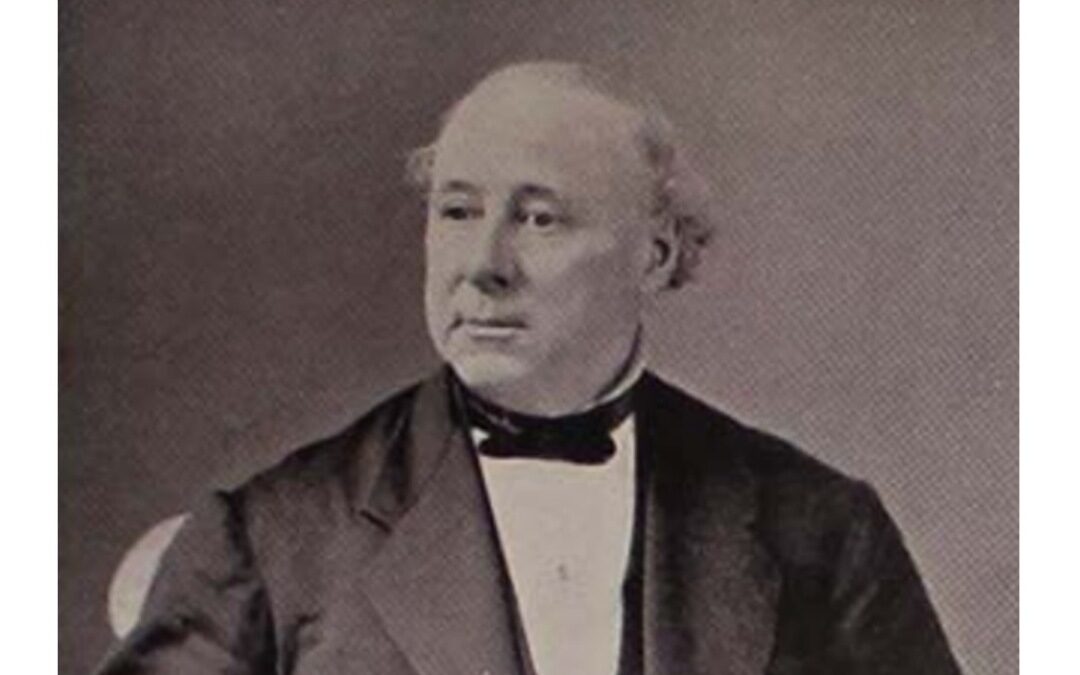
by support | Mar 27, 2023 | Karen's Korner
Luther Colby was born in 1814 to Captain William and Mary Colby in Amesbury, Massachusetts.He attended common schools in the area and at the age of 15 became a printers’ apprentice in Exeter, New Hampshire. His first important work was type setting an edition of “Scott’s Family Bible” and the New Testament with another apprentice.
In 1836, Luther moved to Boston where he worked for the Boston Daily Post, one of the city’s leading newspapers. He remained there for twenty years, working his way up to the editorial room. By that time Luther was a materialist and had no interest in any kind of religion. When Spiritualism began to grow in the 1850s, he would have ignored it.
Some of those in Massachusetts who were interested in Spiritualism included: Dr. Henry F Gardner, Rev. Allen Putnam, Mrs. A. E. Newton, and William Berry. It was through fellow printer, Mr. Berry, that Luther was introduced to seances. At an initial seance at the residence of Mrs. Sterns, Luther first met Mrs. J. H. Conant. He was so impressed with her that he recommended Mr. Berry invite her to hold a series of weekly seances at his home.
Mr. Berry was told by the spirit world through Mrs. Conant in 1856 that he would change jobs and publish a paper to be called Banner of Light. And Luther was right there with all the right publishing experience to help him. The two founded and edited the Banner of Light in Boston beginning in 1857. It became the longest running publication of its kind in the nineteenth century.
Luther was not a prominent man nor book author, but he firmly believed that truth could best be served by a careful publication of all alleged communications from the “sphere of light” to the “mortal state.” He had an avid conviction that the revelation of spiritual truth by the Banner of Light would revolutionize the world. It was his policy that “we shall not believe everything but shall not refuse to listen to what is said.” After Mr. Berry was killed in the Civil War, Colby continued to serve as editor until his death in 1894.
In a memorial address Lyman C. Howe said, “He has come to touch with millions through his public ministrations, with thousands personally; and every one who has felt the life of his touch retains the impress of his individuality still. That impress is, and will continue to be, a modifying influence in the direction of character and its development. He was strong in convictions, and ready to carry out, according to his best understanding, the highest ideals of his life; and in his departure we shall miss all these outward, tangible expressions, and none can take his place from this time, though others, perhaps, are equally as well qualified to give direction to the work ….”
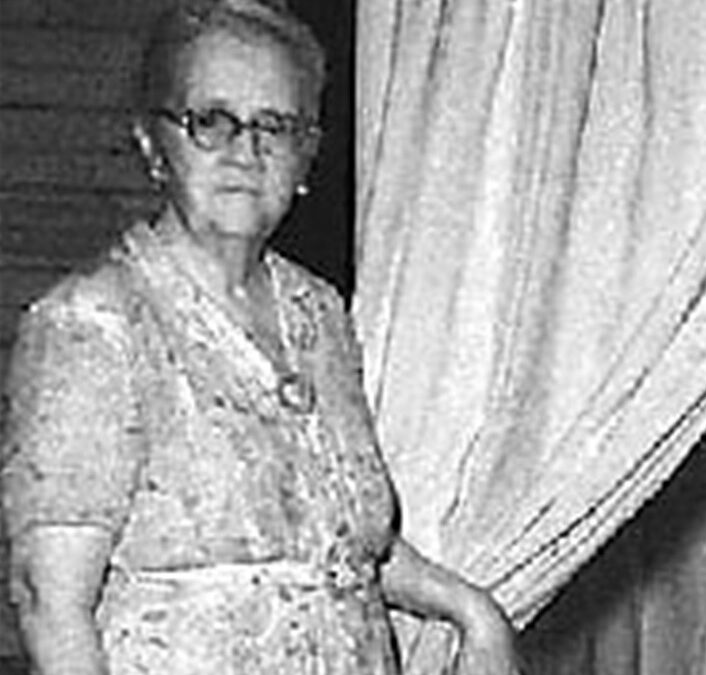
by Karen | Mar 22, 2023 | Karen's Korner
Lena Barnes was born to Frank and Jennie Barnes in Groveland, Massachusetts in 1882. She married her first husband, Charles E. Crossman in 1901, but that marriage did not last. She married Harland A. Jefts in 1910 in Greenfield, Massachusetts. She and Harland lived in Connecticut in 1923 where he worked as a foreman. Lena worked as a corporate trainer, teaching sales to the junior staff. They opened their own Spiritualist church in Boston after that and met Ethel Post in 1926.
Ethel Post opened her church, Spiritualist Temple of Truth and its school, in the fall of 1928 in Miami. The church school had four staff members, which included Lena. Lena taught Philosophy and Comparative Religions. She also worked with Ethel in the afternoons, giving private readings. From 1929 onwards, Lena traveled with Edith Post as she demonstrated her mediumship skills throughout the northeastern United States. In 1930, they visited Canada as well.
As the school prospered, Lena took over the financial and managerial positions for the church and later at Camp Silver Belle in Ephrata, PA. After 1935, she was also a stockholder in in the Mountain Springs Hotel. The Jefts were living at the hotel and Harland is listed as a Yacht captain in the 1940 census. Lena published several booklets under several pseudonyms including Peggy Barns and Lena Barns. These included, Lo, I am With You Always, Self Realization, Psychic Facts, and A Way of Life and Fundamentals of Spiritualism.
In 1950, Lena and Harland lived with Ethel and her new husband, James Parrish, in Miami, Florida over the winter. Lena worked as teacher, lecturer, and writer. She was treasurer for the camp and on the board of directors, and Vice President for the hotel. She died in Ephrata in 1963. Harland died three years later in Brattleboro, Vermont.

by Karen | Mar 16, 2023 | Karen's Korner
Ethel Sullivan was born about 1885 in Jonesboro, Indiana to James and Ella Sullivan. She was exposed to the religion of Spiritualism as a child. Her mother, aunt, and uncle were all members of the Indiana Association of Spiritualists and active at Camp Chesterfield in Anderson, Indiana. Ethel married Porter L. Stout in 1905 and they had a son, Roland, the following year. In the 1910 census, Porter was listed as a salesman and Ethel was a milliner. By 1914, Porter was using the last name, Riley. When he died in 1922, his last name was given as Stout-Riley.
It’s unclear if there was an official divorce, but Ethel Stout married spiritual healer and “suggesto-therapist” (hypnotist) Myron H. Post in 1916 in Anderson, Indiana. Myron had been married before to Dora and they had a son, Frank, born about 1893. Myron worked as an insurance attorney while married to Dora. In 1920, Ethel’s son Roland was living with them, and in 1930, after he married Annabell, they were still living with Ethel and Myron in Anderson, Indiana.
Myron and Ethel quickly became involved in the life of Camp Chesterfield, moving there permanently in 1923. Myron was ordained as a Spiritualist minister and served as Camp President until 1932. Ethel gave her first public demonstrations in 1925 and gained a reputation as a trumpet and materialization medium famous for her spirit guides, Sir Joseph Banks and a Cherokee girl called Silver Belle.
Tension grew between Ethel and Mabel Riffle at Camp Chesterfield. In 1927, Ethel and Myron moved to Miami, Florida, and founded the Spiritualist Temple of Truth, to showcase Ethel’s mediumship and train and accredit new mediums. The sweltering Florida summers shortened the Miami Temple’s season, so the Posts took up an offer by John Stephan, to move their summer programming north to an underused park property in Ephrata, Pennsylvania.
The Morning Call (Allentown, PA), 3 Sept 1932, stated, “Mrs. Post is one of the most highly developed mediums before the public today. She has worked upon platforms of the principal camps and churches of the U.S. and Canada and has presented her various phases of clairvoyance, ballot reading, trumpet; both in light and dark and materialization before psychic research societies of both countries with splendid results.
“Ethel’s direct voice demonstrations and spirit materializations attracted world-wide attention. She would enter a deep trance while sitting in a cabinet, bringing forth her spirit guides and others. During her lifetime, she submitted to many tests to prove the legitimacy of the physical manifestations she produced. There is one account of a séance in 1928 where doctors weighed a manifested spirit as well as Ethel during a demonstration and found her weight loss equaled that of the spirit’s weight. As many as five spirits could materialized during a séance, but Jayne Cuthbert described an unbelievable event in which nearly fifty spirits manifested. In a 1945 account, she stated, “While there were materialized individuals on the floor talking with their loved ones on earth, at the same time during the séance there were voices singing in the cabinet.”
New York Spiritualist Leader, 16 November 1941. Vol. 1 No. 1 said, “Mrs. Ethel Post-Parrish, one of the most famous of materialization mediums, and her not cabinet assistant, Mrs. Lena Barnes Jefts (who has written many distinctive booklets on Spiritualism) spent last week at their Camp Silver Belle quarters in Ephrata, PA, before leaving yesterday for the south to make preparations for opening their Institute of Universal Science for winter classes in St. Petersburg, Florida.”
Ethel divorced Myron Post in 1939 in Dade County, Florida. Her last husband was Jimmy Parrish who she married at the age of seventy-one in 1957. She died the next year, and her ashes were spread about the grounds of Camp Silver Belle.
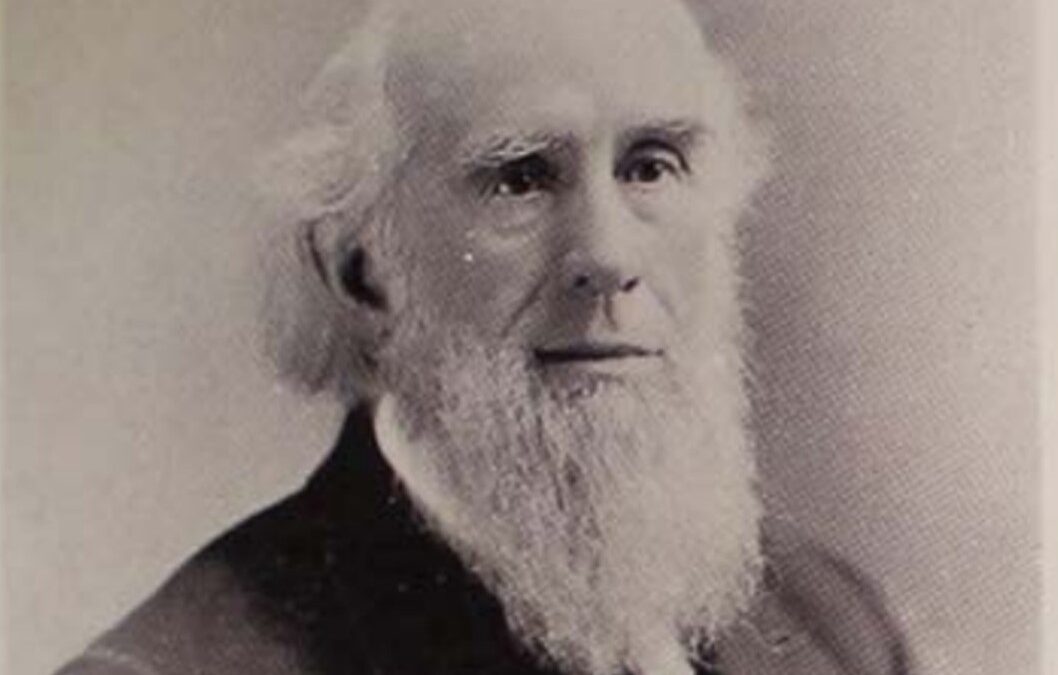
by Karen | Mar 5, 2023 | Karen's Korner
Herman Storer was born in New Haven, Connecticut in 1825 to William and Mary Storer. He began work as a printer and publisher and married his first wife, Sarah Butler, while living in New Haven. She died in 1849 at the young age of 21. Herman remarried to Emily Trowbridge. By 1865 they were living in Brooklyn, and he was working as a chemist. It’s not clear when he became a physician, but he is listed as being one in the 1880 Boston census.
When he became a Spiritualist, Herman worked consistently, either as a medium, lecturer or healer. He was a Spiritualist for more than 50 years and very prominent in camp meeting work, especially during the 1870s and 1880s. He took an active role at Nickerson’s Grove camp and later at Onset Bay. “He had a large clientele as a Spiritualist healer, but he did not wholly discard the use of medicine; much of it, however, he claimed to use under spirit direction. He was a broad and liberal minded man,” according to the Boston Globe, 28 Dec 1896.
The Boston Post, 1 April 1895, published an article about Storer relating his conversion to Spiritualism to those attending the Boston Spiritual Temple on the 47th anniversary of modern Spiritualism: “The calendar indicates that we have made forty-seven stops on the spiritual highway, but the calendar does not indicate the progress made in public opinion since the dawn of modern spiritualism. I have been a spiritualist for forty-five years, and the joy and blessing of my life I attribute to this source.
“I began, as ignorance usually begins, by denying the manifestations. My friend, an editor of a country journal, had been down to Eliken Phelps’ and published the wonderful manifestations said to have happened there. I sent out word to him that I would not attempt to build up my journal on the basis of sensational stories. He came in to see me, and I saw that he was thoroughly convinced of the seances. At his invitation I went down to Stratford and called upon Dr. Phelps. I heard something in the front room. I went and looked. There the piano was being pushed from where it usually stood to where it now rests, and a piece of music came up and rested on the stand.
“I looked at the doctor. He had been a Congregational minister and was the picture of a reverend and reliable man. My house has been full of brother ministers and lawyers belonging to the family. They have been confounded and no evidence of anything, but spirit work has been discovered. I asked them if a medium could be found to give some more evidence. He mentioned Miss Brook, a girl of 13, at Bridgeport. I went down there at once and was invited to join the circle at her home in the evening. The circle began to ask silent questions, and though the raps came we were all ignorant, except the questioner, as to the responses. By and by it came my turn. I asked if there was any spirit that would communicate with me. At once the table was covered with raps.
“My first wife spelled out her maiden name and how long she had been in the spirit—less than two years. And then came a message spelling her baby’s name. Facts followed facts, then my future mediumship was predicted, which after two years came true and has been with me ever since.” Storer died the following year in April 1896.

